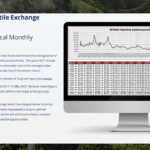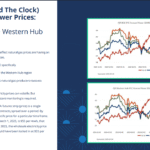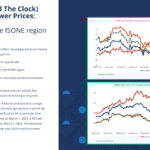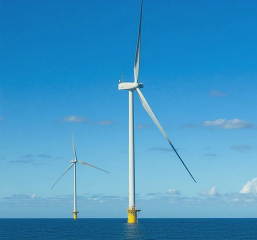Natural gas prices declined in May 2025 as the market remained oversupplied. Domestic production held strong, storage levels rose quickly, and mild weather delayed the start of the cooling season. The June contract settled at $3.204/MMBtu, with July trading near $3.56. The 12-month forward average dropped to $3.97/MMBtu, signaling continued expectations of downward pressure. Crude oil also softened, with WTI closing the month at $61.65/bbl, weighed down by steady global supply and concerns over economic growth.
Bull Factors:
– U.S. LNG exports remained strong, averaging 16.8 Bcf/day, as demand from Europe and Asia stayed elevated. With more natural gas flowing out of the U.S., there’s less available in domestic markets — a tightening effect that can eventually lift prices, particularly if demand picks up this summer.
– Electricity demand from data centers continued to rise, fueled by growth in AI, cloud computing, and streaming services. According to industry reports, U.S. data center electricity usage is expected to increase by over 10% year-over-year, with projections reaching nearly 700 TWh by 2030. Since many regions rely on natural gas for 40–60% of electricity generation, this steady increase in baseline power demand helps support gas prices, even when seasonal weather-driven usage is low.
– New tariffs on Canadian natural gas imports increased demand for U.S.-sourced supply, especially in northern states. This shift boosted localized demand, helping firm up domestic prices in areas that might otherwise see softening due to oversupply.
– Early June weather forecasts showed above-average temperatures across much of the U.S., pointing to increased air conditioning use. As power plants ramp up gas-fired generation to meet peak demand, this seasonal surge could help rebalance supply and demand in the short term.
– The EPA’s proposal to raise renewable fuel requirements for 2026 gave the market a short-term boost in optimism. While the increase to 4.65 billion gallons was below some expectations, it signaled a step toward stronger fuel blending mandates and potential future energy demand growth, especially in transportation and refining.
Bear Factors:
– Storage levels rose rapidly, with a 101 Bcf injection reported the week ending May 23, bringing total gas in storage to 2,476 Bcf — 93 Bcf above the 5-year average. High storage typically reflects supply outpacing demand, creating downward pressure on prices heading into the summer season.
– Natural gas production held steady at around 105 Bcf/day, exceeding current consumption levels. This consistent high output, paired with moderate demand, contributes to a well-supplied market, which in turn limits price movement unless production slows or usage spikes.
– Mild weather in the eastern U.S. delayed the typical start of the cooling season, keeping air conditioning use below average. Since power plants used less gas for electricity, short-term demand weakened, allowing inventories to build and keeping prices in check.
– FERC’s summer reliability assessment warned about growing power grid challenges, particularly from the retirement of dispatchable sources like natural gas plants. While this isn’t an immediate market disruptor, it raises long-term concerns about grid reliability — and can make investors more cautious about backing new natural gas infrastructure.
Final Takeaways:
In May, the natural gas market remained well-supplied, with strong production, rising storage levels, and milder weather holding back seasonal demand. At the same time, structural demand drivers — such as LNG exports and electricity consumption from data centers — continued to play a supportive role in the background.
As we move into June, factors like warmer weather, policy developments, and export activity will influence market dynamics. For energy users, this is a good time to stay informed and evaluate procurement strategies with current market fundamentals in mind
Charts and graphs sourced from Constellation










